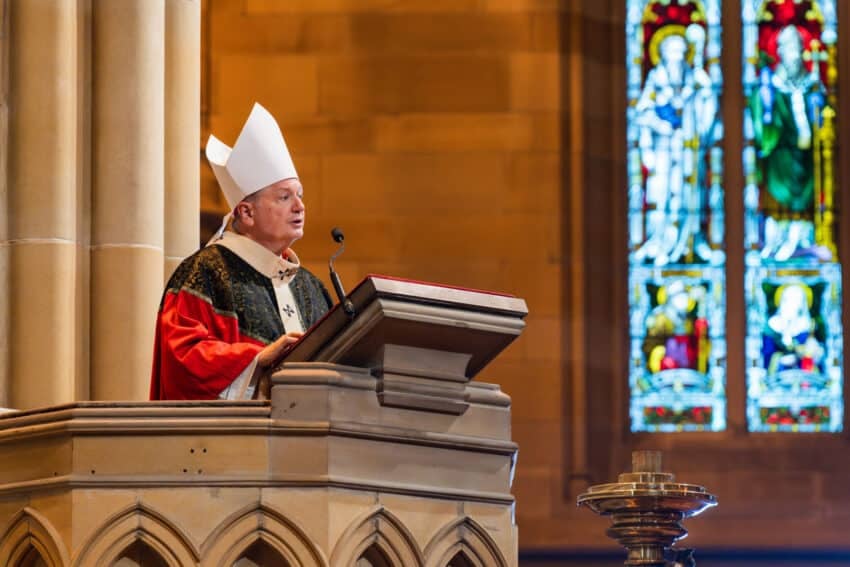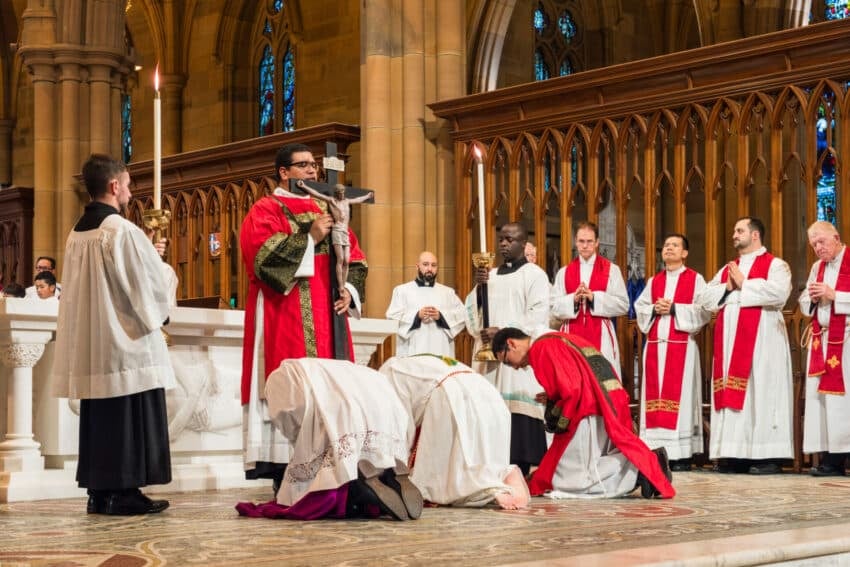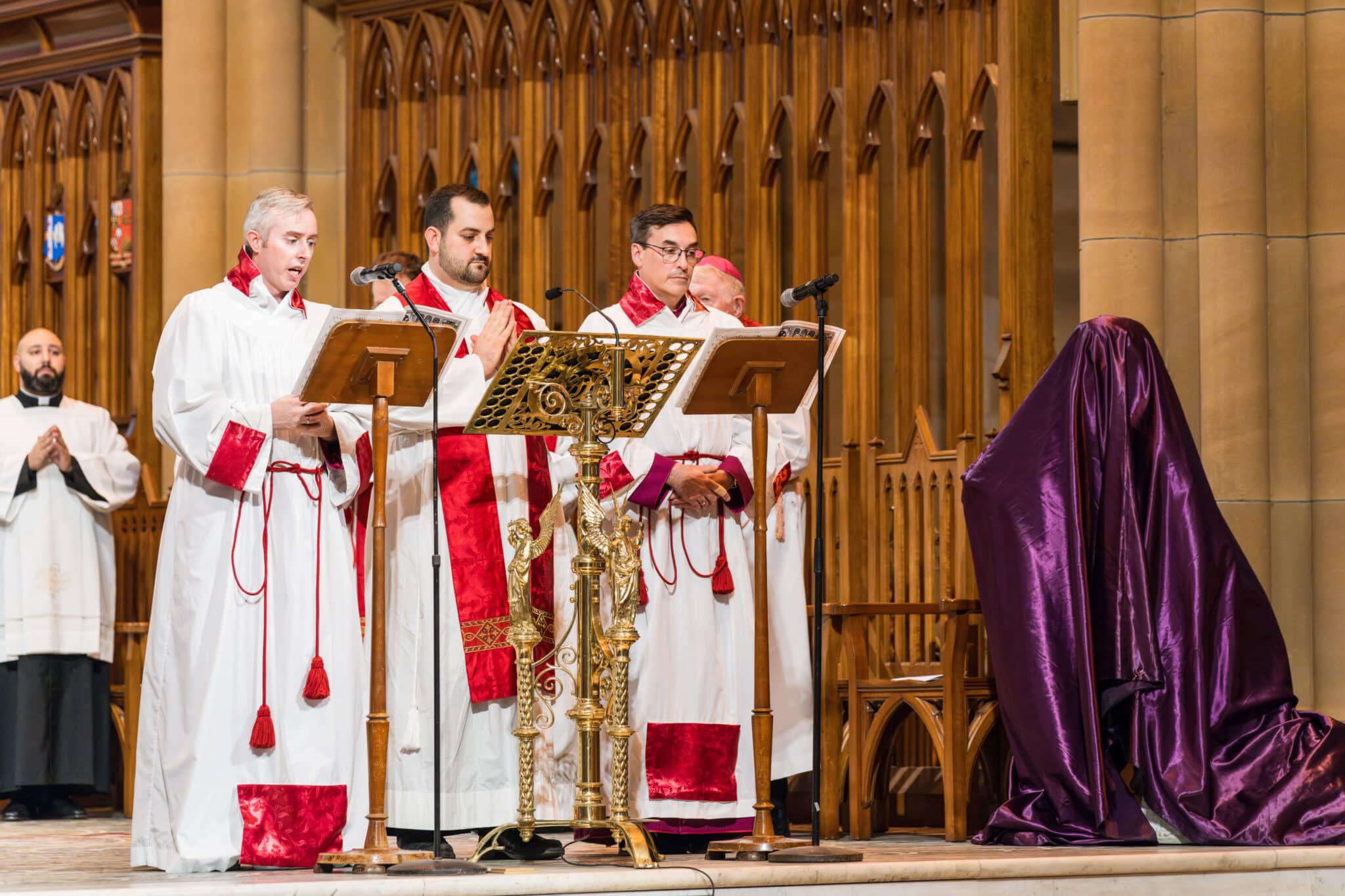
The Holy Lance or Spear of Destiny is the one that pierced Jesus’ side in today’s Passion of St John (Jn chs 18 & 19 at 19:34). Like the Grail (or chalice) of the Last Supper, the Lance became the subject of various extrabiblical traditions, including the Arthurian legend. In Chrétien de Troyes’ medieval poem Perceval, the Fisher King has keeping of both Lance and Grail: the one has destructive powers, the other healing ones. The story passed through the writings of Eschenbach and Malory to Wagner’s opera Parsifal. It obsessed both Napoleon and Hitler, who thought the Lance could assure them military victory. It has also featured in comics, novels, and the 2005 movie, Constantine. To this day there are several relics purporting to be from the Holy Lance, but none has been authenticated.
Why run Jesus through with a lance? Wasn’t it enough to brutally scourge Him, drag Him heavy burdened through the streets, and nail Him to a cross to die of asphyxiation, blood loss and organ failure? Well, it was festival time, and the authorities wanted the bodies out of the way. Crurifragium was ordered: breaking the legs of the crucified below the knees, so they could no longer support themselves and would soon suffocate. But when the soldiers got to Jesus, He was already dead. It was said that the Saviour would be pierced but His bones unbroken (Ex 12:43,46; Num 9:12; Ps 34:20; Zech 12:10), but Officer Longinus was unaware he was fulfilling prophecy when he speared Jesus through. John records that “immediately there came out blood and water” (Jn 19:34). So, like the Holy Grail, the Holy Lance is a relic of our redemption by blood: the first carried the Precious Blood of the Eucharist, the second released it from Christ’s side.

Jesus was lanced because they were determined to see Him dead. There were many negative emotions in the air that day, even in John’s rather sanitized telling of events. A traitor brings soldiers to arrest Jesus. Simon Peter wounds the high priest’s servant. The mob bays for blood. Jesus is seized and bound, roughed up by guards, tortured and executed. There’s no shortage of hatred about.
There’s fear also. When in the garden Jesus intimates His divinity by saying “I am He”, the soldiers quake and fall to the ground. There’s some fumbling fencing from Peter, but he ultimately plays the coward. Pilate is anxious that Jesus might really be some sort of king or even son of a god. He’d release Jesus were he not afraid of how that might make him look in Rome…
Hatred, fear—there was also plain indifference. Judas enables his friend’s arrest. Peter denies even knowing Him. Caiaphas says he’d happily sacrifice an innocent for the greater good. The Council go along with him. Pilate cynically asks “What is truth?” and, though convinced of Jesus’ innocence, hands Him over to be flogged, crucified, lanced.
The innocent Jesus or the bloodthirsty Barabbas? The true Son of God or the imposter-god the August Caesar? Courage or betrayal? Power or sacrifice? Truth or falsehood? In the face of indifference, fear and hatred, what do we choose?

Left to our own devices, we’d probably be no better than the Good Friday mob. But the antidote to indifference is faith, to fear is hope, to hatred is love. Faithfulness meant Arimathea and Nicodemus would give Jesus a reverent burial. Hopefulness led myrrh-bearing women to return to the tomb and maybe find it empty. Love made Jesus’ mother and friend standby to the end. More than the nails, it was a solid love that held Jesus to the cross as He gave up His life for the world. And a liquid love poured forth from His Sacred Heart as His side was breached.
Ancient animosities and modern conflicts, polarisation and persecution, financial insecurity and relationship difficulties: all conspire to stir up hatred, fear and indifference. But the Holy Lance, an instrument of destruction, is the beginning of the end for such destructive forces. As the water of Baptism and the blood of the Eucharist erupt from the side of Christ, we are freed from the power of those negative emotions. But freed for what? More tomorrow night! For now, Christ proclaims: “It is accomplished!”
